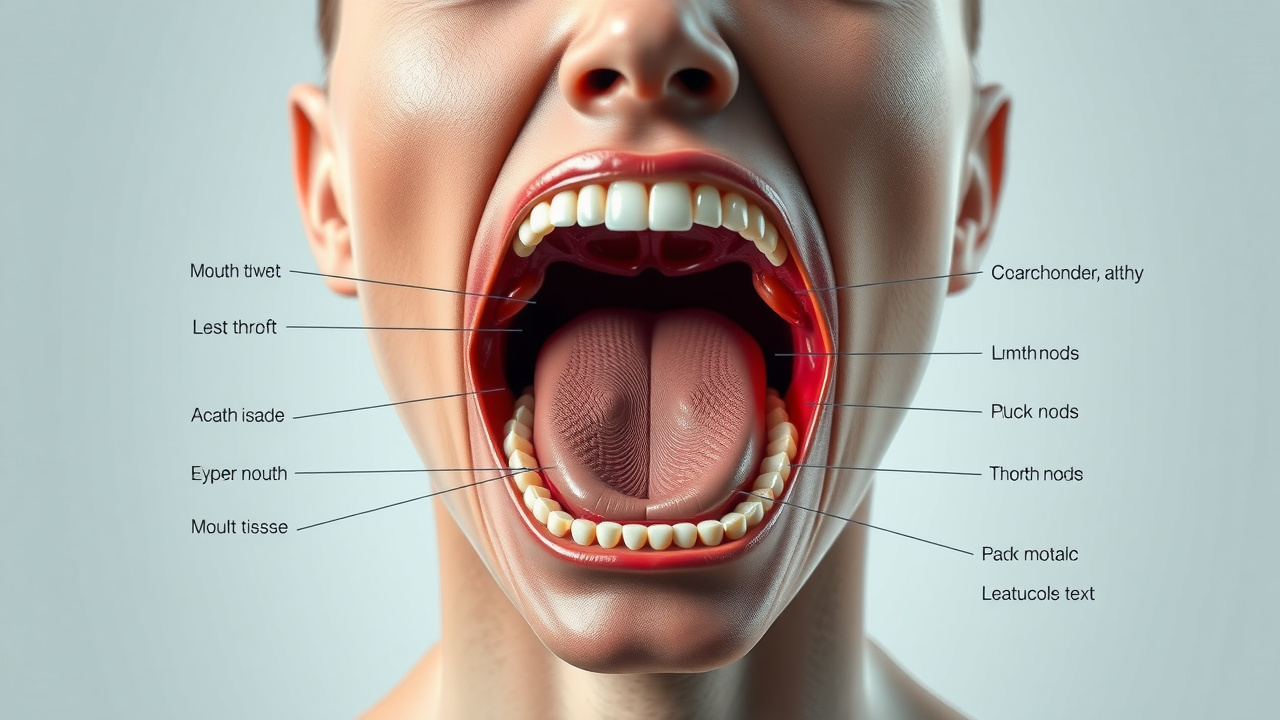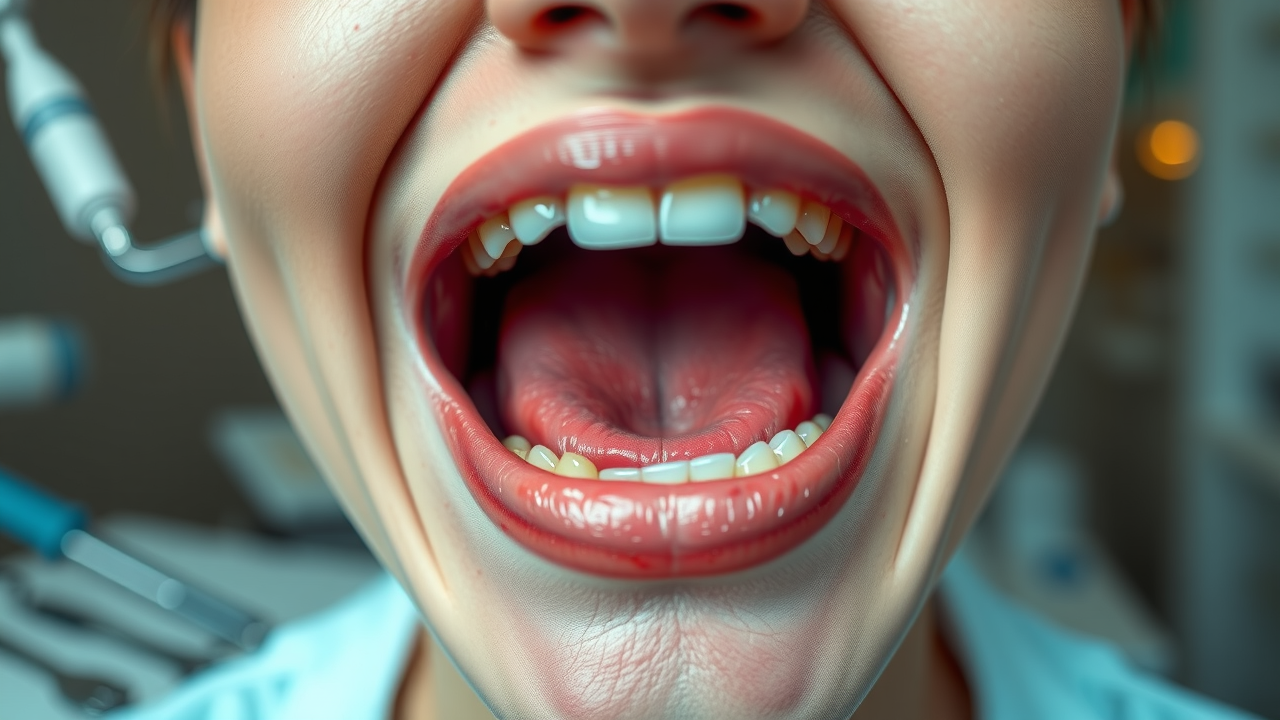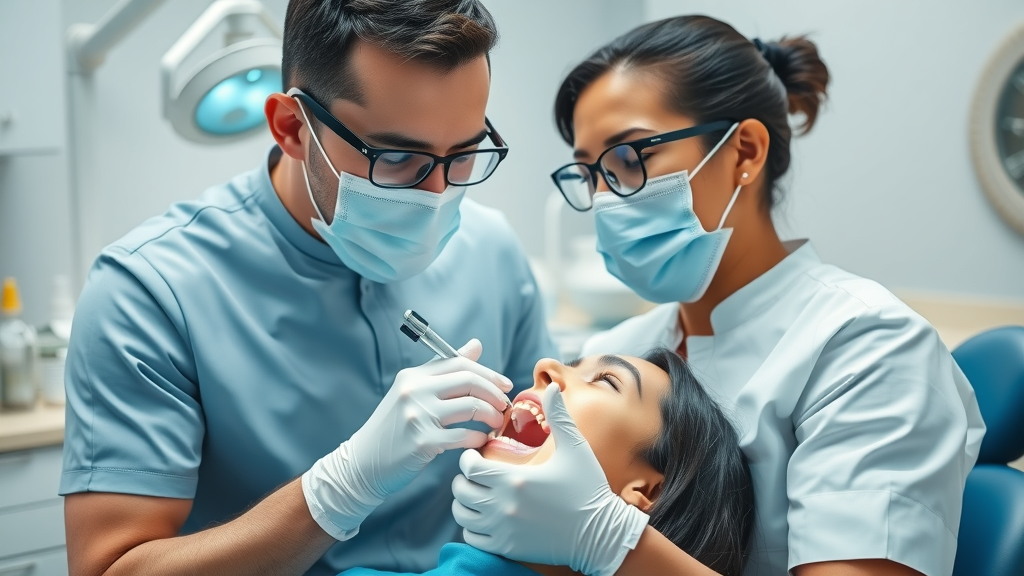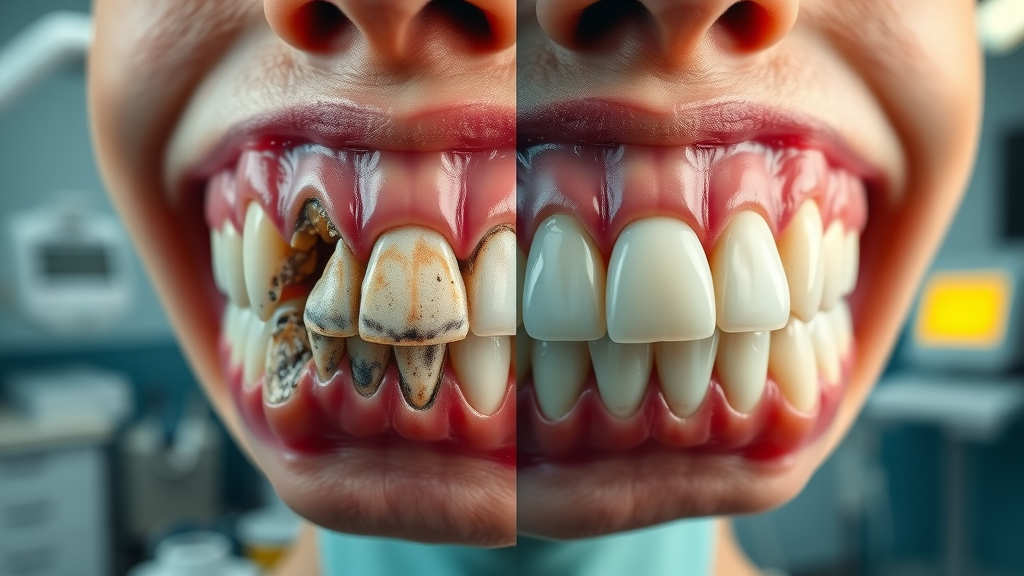Did you know that people diagnosed with oral cancer at an early stage have a five-year survival rate of over 80%—compared to below 30% for late-stage detection? This surprising statistic drives home one clear message: being able to answer the question “how can I check for mouth cancer?” can be lifesaving. Our comprehensive guide will empower you with the knowledge to confidently recognize signs, perform self-exams, and know when to seek professional help for oral, mouth, and oropharyngeal cancer. Whether you're performing a routine check at home or considering a visit to your dentist, early action makes all the difference.
A Startling Statistic: Early Detection of Mouth Cancer Saves Lives
The survival rates for mouth cancer dramatically depend on how soon it is detected. According to the American Cancer Society, when mouth or oral cancers are found early, nearly 8 out of 10 people live five years or longer. In contrast, if the cancer has spread to lymph nodes or distant organs, those odds fall to less than 3 out of 10. This discrepancy emphasizes the importance of regular oral cancer screenings and being proactive about examining any changes in your mouth or neck. With many neck cancers and oral cancers showing minimal early symptoms, recognizing warning signs and understanding the basics of a self-exam can make a crucial impact in catching cancer before it spreads.
As more people are diagnosed with oral, oropharyngeal, and neck cancers each year, education about symptoms and diagnostic tests to check for abnormalities is essential. By learning how to check for mouth cancer—whether through a home exam, professional oral cancer screening, or advanced diagnostics like a CT scan or fine needle aspiration—anyone can take effective steps towards early detection and prompt treatment.
What You'll Learn About How Can I Check for Mouth Cancer
Overview of oral cancer and mouth cancer
Recognizing symptoms of oral cancer and oropharyngeal cancer
Understanding screening and diagnostic processes such as CT scan and fine needle aspiration
Expert tips on examining lymph nodes at home
When to seek professional evaluation
Understanding Oral Cancer and Mouth Cancer
Oral cancer and mouth cancer refer to cancers that develop in the tissues of the mouth, including the lips, gums, tongue, inner cheeks, roof and floor of the mouth, and the back of the throat. Sometimes, cancer in the area where the mouth meets the throat is called oropharyngeal cancer. All of these cancers are considered “head and neck cancers” and can be life-threatening if not detected and treated early. Knowing how to identify symptoms of oral cancers early increases the chance of successful treatment.
These cancers may present differently depending on the area affected, and some symptoms may not seem significant at first. However, by understanding the different types of cancers (including oropharyngeal cancer), and knowing what to look for, you can perform effective checks for suspicious changes in your mouth or neck, as well as make smart decisions about when to see a dental or medical professional.
Overview of Oral Cancer, Mouth Cancer, and Oropharyngeal Cancer
Oral cancer most often starts in the lining of the mouth or lips but can spread to deeper areas including the lower jawbone and lymph nodes. Mouth cancer commonly refers to the same set of conditions, and oropharyngeal cancer specifically targets the area at the back of the mouth where it meets the throat. Collectively, these cancers account for tens of thousands of diagnoses every year in the United States alone.
These cancers share many risk factors: tobacco use, heavy alcohol consumption, HPV infection, frequent sun exposure (for lips), and weakened immune systems. Recognizing symptoms of oral cancer and understanding the anatomy—where to check and what to look for—are vital steps in early detection and prompt treatment.

How Common Is Mouth Cancer and Who Is At Risk?
Mouth and oral cancers are more common than many realize. In the United States, over 50,000 people are diagnosed with oral or oropharyngeal cancer each year. The risk increases with age, tobacco or alcohol use, and persistently poor oral hygiene. However, the fastest growing segment of new patients are younger adults under 50 with no traditional risk factors—often due to HPV. These statistics highlight the need for everyone to learn how to check for mouth cancer and recognize even subtle symptoms.
Certain groups may be at higher risk, including those with a family history of head and neck cancers, chronic dental irritation, or a history of significant exposure to ultraviolet light (for lip cancers). Nevertheless, anyone can develop mouth or oral cancer—which is why regular self-exams and professional check-ups are recommended for all adults, regardless of perceived risk.
“Early detection of oral cancer is critical, as it significantly improves survival rates.” – American Cancer Society
Symptoms of Oral Cancer: What to Watch For
Spotting the symptoms of oral cancer early is key to improving outcomes. Many oral cancers are initially painless, which means they may go unnoticed until they become more advanced and challenging to treat. That’s why it’s crucial to be vigilant about changes in your mouth—even those that seem minor.
Symptoms of mouth cancer and oropharyngeal cancer can mimic benign conditions, such as canker sores or throat infections, so keep track of anything that doesn’t resolve within two weeks. If you notice something unusual, especially if you have known risk factors, it’s important to get it checked by a professional promptly.
Common Symptoms of Oral Cancer and Mouth Cancer
Sores that do not heal
Lumps or thickened tissues in the mouth, throat, or neck
Red or white patches
Difficulty swallowing or chewing
Persistent sore throat
Change in voice or hoarseness
Any of these symptoms of oral cancer—especially a white patch, lump, or sore that persists longer than two weeks—warrants a closer look and possibly further diagnostic tests. It’s important to remember that while these symptoms may be due to less serious conditions, they can also indicate early mouth cancer, which is most treatable when caught at this stage.
Swelling or hardening in your neck, jaw, or throat can suggest that the cancer has spread to nearby lymph nodes. Sometimes, such signs are the only early warning signals that oral or oropharyngeal cancer is present. If you develop these symptoms, especially if you have a history of tobacco or alcohol use, don’t delay seeking answers to “how can I check for mouth cancer?”
Specific Symptoms of Oropharyngeal Cancer
Oropharyngeal cancer involves the area at the back of the mouth and throat. This location means symptoms can sometimes be mistaken for persistent cold or tonsillitis. Unique signs may include difficulty moving the tongue, a feeling of something caught in the throat, ear pain without infection, or even changes in teeth alignment. Symptoms of oropharyngeal cancer also include soreness or numbness in the mouth, voice changes, or unexplained weight loss.
Because oropharyngeal cancers are often associated with HPV infection, younger adults may be diagnosed even if they don’t have traditional risk factors. This makes awareness and self-monitoring all the more important. If these symptoms last for more than two weeks, or if you experience new difficulty swallowing, chewing, or speaking, ask your doctor about a thorough oral cancer screening—even if others dismiss your concerns about mouth or throat discomfort.

When to Be Concerned: Symptoms of Oral Cancer
Persistent or unusual symptoms—even if they’re painless—should trigger a self-exam and prompt communication with your dentist or doctor. Mouth and oropharyngeal cancers can progress silently, especially if signs like sores, color changes, or throat discomfort are ignored. Schedule a professional check-up if you notice symptoms that don’t resolve quickly, as early detection dramatically increases chances for cure.
If you notice lumps, thickening, or unexplained swelling in your mouth or neck, or any abnormal area that persists, seek professional evaluation. These can be warning signs that should not be taken lightly. The sooner mouth cancer is diagnosed, the more effective—and less invasive—treatment can be.
For those interested in a more detailed look at what happens during a professional screening, you can explore the specific steps and benefits of an oral cancer screening at Johnstown Dental Care, which outlines how dental professionals assess and detect early signs of oral cancer.
How Can I Check for Mouth Cancer at Home?
Regular self-exams are a cornerstone of early detection for mouth cancer. Knowing how to perform these checks at home can help you discover abnormalities early, before symptoms of oral cancer become more serious or spread to lymph nodes and other areas. It’s a practical skill for everyone, especially those at higher risk due to tobacco, alcohol use, or HPV exposure.
Conducting a mouth cancer self-exam just takes a few minutes and doesn’t require special tools. The key is consistency and knowing what to look and feel for. By following the steps below, you’ll empower yourself to catch suspicious changes—giving you and your dentist crucial early-warning information.
Step-by-Step Self-Exam: Checking for Mouth Cancer
Inspecting lips, gums, cheeks, and roof of mouth
Looking for abnormal lumps, patches, or sores
Examining under the tongue and inside cheeks
Feeling for lumps or swelling in lymph nodes around the neck and jaw
Start by washing your hands and standing in front of a well-lit mirror. Open your mouth wide and look at your lips, gumline, and the inside of your cheeks. Using a clean finger or the tip of your tongue, gently feel for any lumps, rough edges, or areas that feel different from the surrounding tissue. Pay special attention to the roof of the mouth and under the tongue—a small flashlight can help.
Next, use your first three fingers to feel for enlarged lymph nodes along your jawline and the sides of your neck. Move in small circles, noting any firm, painless lumps that weren’t present before. These steps can help you notice subtle but important changes that may be the first signs of cancer in your mouth or nearby lymph nodes.
Tools and Tips for an Effective Self-Exam
You don’t need advanced tools to perform an at-home check for mouth cancer. A bright light source, clean fingers, a hand mirror, and a small gauze pad or paper towel (to help gently pull lips or cheeks aside) are all you need. Some people use a tongue depressor, but being gentle and methodical is far more important than any specific “gadget.”
Tips for a thorough exam: Set a monthly reminder, document any unusual findings (with a photo or notes), and compare with previous checks. If you smoke, drink often, or have a family history of head and neck cancer, perform these exams more frequently. Remember, these self-exams supplement—not replace—regular professional screenings.
Medical Diagnosis: How Do Professionals Check for Mouth Cancer?
While self-exams play a crucial role in early detection, a full diagnosis or confirmation of mouth cancer requires professional evaluation. Dentists and oral surgeons are trained to recognize suspicious areas and can order diagnostic tests to check for cancerous cells, the extent of cancer, and possible spread to lymph nodes. Understanding what to expect during a professional oral cancer screening can ease anxiety and ensure you get the best care possible.
Routine dental check-ups often include a visual and tactile examination for mouth abnormalities. If a dentist notices something suspicious, they may recommend more advanced testing—a CT scan, biopsy by fine needle aspiration, or ultrasound using sound waves to examine the tongue, jaw, or neck. These steps are designed to quickly identify cancerous or precancerous changes so treatment can begin without delay.
Professional Oral Cancer Screening: What to Expect
During an oral cancer screening, the dentist or doctor will look for red or white patches, lumps, sores, and other abnormal areas. They’ll feel along your neck, jaw, and inside your mouth for thickening or swelling of tissue that might suggest cancer or involvement of lymph nodes. If they find areas of concern, further tests are ordered to confirm or rule out cancer.
The exam often includes questions about your medical history, lifestyle habits, possible symptoms of oral cancer, and any family history of head and neck cancers. If further assessment is needed, a specialist may use cameras, imaging, or minimally invasive sampling (like fine needle aspiration) to get a sample of cells from a potentially cancerous area or a suspicious lymph node.

Key Diagnostic Methods: CT Scan, Fine Needle Aspiration & Inspection of Lymph Nodes
When a suspicious spot or lump is found, the next step often involves imaging and sampling. A CT scan helps identify the exact size and spread of cancer, especially if it may have spread to lymph nodes in the neck or other areas. A fine needle aspiration biopsy uses a thin needle to remove a small amount of tissue or fluid from a lump, which is then examined for cancerous cells under a microscope. This is a fast and minimally invasive way to determine if an abnormal area is malignant.
Physical inspection of lymph nodes is a critical part of the process because oral cancers often spread there first. Swollen, hard, or painless nodes may indicate cancer has spread and help doctors decide on a treatment plan. Additional tests, such as ultrasound with sound waves or MRI, are sometimes used to get a fuller picture of head and neck cancer involvement.
Comparison Table: Self-Exam vs. Professional Examination for Mouth Cancer |
||
Criteria |
Self-Exam |
Professional Exam |
|---|---|---|
Purpose |
Early detection of abnormal areas, signs of cancer |
Comprehensive screening, diagnosis, and confirmation |
Tools Used |
Mirror, clean fingers, good lighting, gauze pad |
Visual exam, palpation, endoscopy, imaging (CT scan), fine needle aspiration |
Findings |
Surface changes, lumps, discoloration, persistent sores |
Deeper tissue involvement, spread to lymph nodes, cancer stage |
Limitations |
Cannot confirm diagnosis, may miss deep or hidden lesions |
Detailed diagnosis, staging, can identify all abnormal areas |
Recommended Frequency |
Monthly or as needed |
Annually or as directed by your dentist/physician |
The Role of CT Scan, Lymph Nodes, and Fine Needle Aspiration in Diagnosing Mouth Cancer
If professional evaluation reveals suspicious findings, advanced diagnostics are used. A CT scan creates detailed images of your head and neck, showing exactly where the cancer is and how far it has spread. Lymph nodes are carefully evaluated, as these are often the first sites to which mouth cancer spreads. If any are enlarged or abnormal, a fine needle aspiration biopsy may be performed.
Fine needle aspiration is especially useful when deeper lumps found in the neck or jaw do not have obvious changes on the surface. With these tests, doctors can create a clear plan for treatment and give you the best chance at a successful outcome.
CT Scan: Identifying the Extent of Mouth and Oropharyngeal Cancer
The CT scan (computed tomography) is a special X-ray imaging method used in mouth cancer diagnosis. It produces cross-sectional images, allowing doctors to see the size, exact location, and whether the cancer has spread to tissues like the jawbone or lymph nodes. CT scans play a critical role in diagnosing head and neck cancers, informing both treatment decisions and prognosis.
If your dentist or doctor suspects oral cancer, a CT scan can visualize not just the blockages or masses in the mouth, but also hidden cancer growths in nearby lymph nodes, deep muscle layers, or even regions close to the nose and throat. This information is vital prior to surgery or radiation—ensuring all cancerous tissue is targeted.
Understanding the Importance of Examining Lymph Nodes
Lymph nodes are key checkpoints in the body's immune system and commonly the first location where oral cancer spreads. During both self- and professional exams, enlarged, hard, or painless lymph nodes in the neck or under the jaw can suggest cancer has spread and often prompt further tests, such as fine needle aspiration or ultrasound.
Physical palpation—feeling along the jaw, under the chin, and down the sides of the neck—can detect lumps or firmness. In a professional setting, a combination of physical exam, imaging, and biopsies will help determine whether these nodes have signs of cancer and dictate the appropriate treatment approach.
What Is Fine Needle and Fine Needle Aspiration Biopsy?
A fine needle aspiration biopsy uses a thin, hollow needle to extract a small sample of cells or fluid from a suspicious lump or lymph node. The sample is examined in a lab for cancerous cells. This minor procedure is performed under local anesthesia and is considered quick, safe, and accurate in distinguishing benign from cancerous lumps.
Fine needle aspiration is essential for diagnosing oral cancers and for determining whether the cancer has spread to nearby lymph nodes. Results help guide treatment and can spare people from more invasive surgical biopsies when the diagnosis is uncertain.
What Is the 3 Finger Test for Oral Cancer?
Answer: The 3 Finger Test for Oral Cancer Explained
The 3 finger test is a simple screening tool used to assess mouth opening and spot potential issues related to oral cancer. To perform this test, place the index, middle, and ring fingers vertically between your upper and lower front teeth. If you can fit all three fingers comfortably, your mouth opening is considered normal. Difficulty or pain during this step may signal tissue stiffening or a lesion—potentially an early warning sign of mouth cancer or other oral conditions.
While this test alone can’t diagnose cancer, restricted mouth opening (trismus) is sometimes a symptom of deeper tissue involvement by cancer or precancerous changes. If you notice a reduction in mouth opening over time, especially with other symptoms of oral cancer, consult your dentist or doctor.
How Do You Get Checked for Mouth Cancer?
Answer: Steps for Getting Checked for Mouth Cancer
The first step to getting checked for mouth cancer is a thorough dental or medical examination. During this visit, your provider will check your entire mouth for abnormal areas, including persistent sores, lumps, or discolored patches. They’ll also feel for enlarged lymph nodes in your neck and jaw.
If anything unusual is found, diagnostic imaging like a CT scan, and possibly a fine needle aspiration biopsy, will help determine the cause. Early detection of cancer—by catching these signs during professional exams—is key to successful treatment. If you have persistent symptoms, don’t wait: schedule an examination promptly.
What Are the First Signs of Mouth Cancer?
Answer: Identifying the Early Warning Signs of Mouth Cancer
The first signs of mouth cancer are often subtle and easily missed. The most common early warning signals include persistent sores or ulcers that do not heal, red or white patches, and unusual lumps or thickenings on the lips, gums, or inside the mouth. Other initial symptoms may include pain, numbness, loose teeth, or changes in how dentures fit.
Because these symptoms of oral cancer may resemble minor oral conditions, you should be alert to any abnormal area that lasts for more than two weeks. Early investigation and timely intervention are essential for improving outcomes.
How to Check for Mouth Cancer at Home
Answer: Home Techniques for Checking for Mouth Cancer
When checking for mouth cancer at home, use good lighting and a clean mirror to inspect your lips, cheeks, gums, and roof and floor of your mouth. Gently pull your cheeks aside to view all surfaces and feel for lumps or thickened areas with clean fingers. Inspect under your tongue and at the back of your throat where possible.
Finally, feel along your jawline and side of your neck for any swollen or painless bumps—potentially enlarged lymph nodes. Document anything that seems new, painful, or abnormal, and re-check monthly. If you discover any persistent symptoms or signs of oral cancer, reach out to your dentist as soon as possible.
Frequently Asked Questions About How Can I Check for Mouth Cancer
Can oral cancer or mouth cancer be cured if caught early?
Yes, when diagnosed at an early stage, the cure rate for oral and mouth cancer is significantly higher, with survival rates exceeding 80%. The chances decrease dramatically if the cancer has spread, which is why early detection is vital.Are there painless symptoms of oral cancer?
Many early symptoms of oral cancer, including small white or red patches, lumps, or thickened tissue, are painless. This often leads to delayed diagnosis, highlighting the importance of regular checks and professional screenings.How often should I perform self-exams for mouth cancer?
Monthly self-exams are recommended for adults, especially those with risk factors like tobacco or alcohol use. Regular checks help identify persistent symptoms or changes that need further investigation.Does oropharyngeal cancer have unique symptoms?
Yes. Oropharyngeal cancer may cause persistent ear pain, throat discomfort, difficulty swallowing, or changes in voice. These symptoms can be subtle but should not be ignored if they persist more than two weeks.
Key Takeaways on How Can I Check for Mouth Cancer

Regular self-exams, awareness of warning signs, and prompt professional evaluation are the best ways to ensure early detection of mouth cancer. If you notice any persistent or unusual symptoms, don’t wait—contact your dentist or doctor for a comprehensive screening.
Conclusion: Prioritize Oral Health—Early Detection of Mouth Cancer Is Critical
Early detection saves lives. Make self-exams and professional screenings part of your regular routine to ensure a healthy future.
Taking charge of your oral health is a lifelong commitment, and understanding how to check for mouth cancer is just one part of a proactive approach. To further protect your smile and overall well-being, consider the broader benefits of maintaining consistent dental visits. Discover how regular check-ups not only aid in early cancer detection but also help prevent a range of oral health issues by reading about the importance of regular dental visits. By staying informed and engaged, you empower yourself to make confident decisions for your health—today and for years to come.
Schedule a Professional Oral Cancer Check at Johnstown Dental Care
Contact Information and Proudly Serving Johnstown, New Albany, Granville, Alexandria, Pataskala, and Surrounding Areas
For a thorough, professional oral cancer screening, schedule an appointment at Johnstown Dental Care.
Address: 370 West Coshocton St., Johnstown, OH 43031
Phone: (470) 967-6046
Website: www.johnstowndentalcare.com
Proudly serving Johnstown, New Albany, Granville, Alexandria, Pataskala, and surrounding areas across Licking, Franklin, and Delaware Counties. Prioritize your oral health—book your appointment today!
Watch our informative and step-by-step video guide. In this video, a dental professional demonstrates self-examination techniques, highlights warning signs, and emphasizes the necessity of both home checks and professional consultations for oral cancer.
Gain insights from leading experts with this visual guide to recognizing the signs and symptoms of oral cancer, empowering you with practical advice for early detection.
Regular self-examinations are crucial for the early detection of mouth cancer. The Mouth Cancer Foundation provides a comprehensive guide on performing a self-exam, detailing steps such as inspecting your lips, gums, cheeks, and tongue for any abnormalities. They emphasize the importance of monthly checks and seeking professional advice if you notice anything unusual. (mouthcancerfoundation.org)
Additionally, the American Cancer Society highlights the significance of routine dental check-ups, as dentists can identify early signs of oral cancer during examinations. They also recommend self-exams to look for changes like white patches, sores, or lumps, especially for individuals with higher risk factors such as tobacco or alcohol use. (cancer.org)
By incorporating these self-examination techniques and maintaining regular dental visits, you can enhance your ability to detect mouth cancer early, thereby improving the chances of successful treatment.
 Add Row
Add Row  Add
Add 




Write A Comment